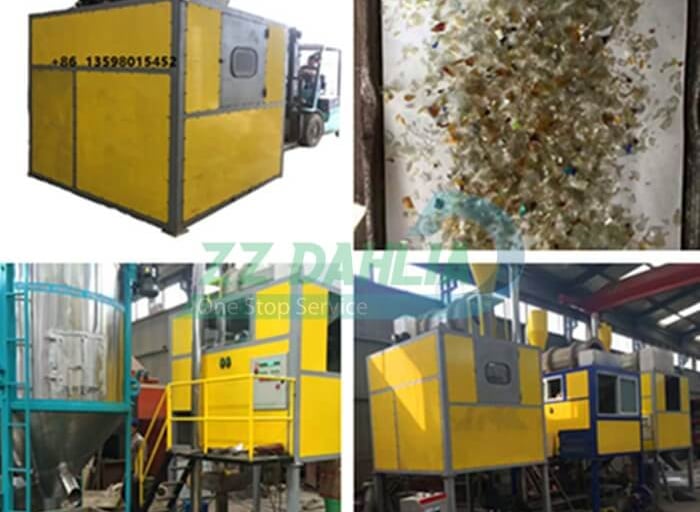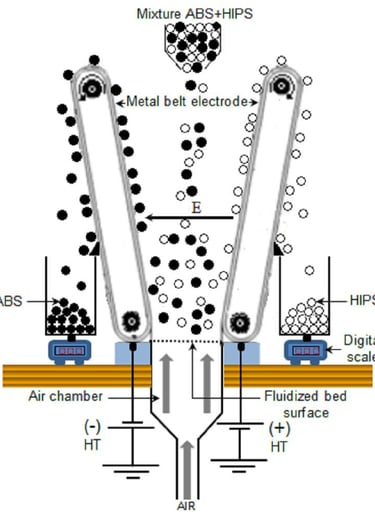What is an Electrostatic Separator
An electrostatic separator typically consists of the following main components:
1.Hopper and Feeder: The hopper is where the mixture of materials to be separated is loaded. The feeder ensures a controlled and uniform flow of material onto the separation unit.
2.Electrostatic Charging Unit: This unit applies an electric charge to the particles as they pass through it. The charging can be done through various methods, such as corona discharge or induction charging.
3.Separation Roller: The separation roller is a rotating drum that is electrically charged. It attracts or repels the charged particles based on their electrical properties.
4.Collection Hoppers: These are positioned underneath the separation roller to collect the separated materials.
Working Principle of electrostatic separator
The working principle of an electrostatic separator is based on the difference in electrical conductivity
between the materials to be separated. The process can be broken down into the following steps:
1.Material Feed: The mixture of materials is fed onto the separation unit through the hopper and feeder.
The feeder ensures that the material is evenly distributed and presented to the charging unit.
2.Charging the Particles:
Corona Discharge: In this method, a high-voltage electrode is used to create a corona discharge in the
vicinity of the particles. The electric field generated by the electrode charges the particles through ionization of the air.
Induction Charging: This method involves placing the particles in close proximity to a charged electrode
without direct contact. The particles become polarized due to the induction effect and acquire a charge.
3.Separation on the Roller:
The charged particles are then conveyed onto the separation roller. The roller is typically charged with a polarity opposite to that of the particles, creating an attractive force.Conductive materials, which have a higher electrical conductivity, quickly discharge their charge to the roller and are attracted to it. These materials adhere to the roller and are carried up to a certain point where they are discharged and fall off into a collection hopper.On the other hand, non-conductive materials, which have a lower electrical conductivity, retain their charge for a longer time. They are repelled by the roller due to the same charge and are thrown off the roller at an earlier point into a different collection hopper.
4.Collection of Separated Materials:
The collection hoppers positioned underneath the separation roller capture the separated materials. Conductive materials fall off the roller at a specific point due to their quick discharge, while non-conductive materials are repelled and fall off at a different point.
This way, the electrostatic separator effectively separates the materials based on their electrical properties.
Applications
Electrostatic separators find applications in various industries due to their efficient separation capabilities:
1.Mining: Separation of valuable minerals from gangue materials.
2.Recycling: Sorting of plastics, metals, and other materials from waste streams.
3.Plastics Industry: Separation of different types of plastics for recycling purposes.
4.Food Processing: Removal of impurities from food grains and other products.
Why choose Electrostatic Separation
1.High Efficiency: Electrostatic separators can achieve high separation efficiency with minimal material loss.
2.Energy-Efficient: The process consumes relatively low amounts of energy compared to other separation techniques.
3.Environmental Friendliness: It is a non-chemical process, making it environmentally friendly.
4.Versatility: Can be used to separate a wide range of materials based on their electrical properties.
In conclusion, an electrostatic separator is a versatile and efficient device that utilizes the principles of electrostatics to separate materials based on their electrical conductivity. Its ability to effectively sort particles of different materials makes it a valuable tool in various industrial applications.
For more information or best offer,Please kindly directly call us or talk to whatsapp: +86 18738158809
Email: dahlia@dahliamachine.com
Website: https://dahliamachine.com






